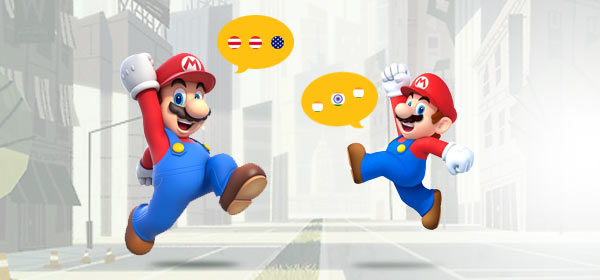Localization is an important step in mobile game development if you are aiming for a global market. Here are the most common mistakes made during game localization.
1. Hard-coding of text inside source code
Hard-coding text into the game’s source code is a common shortcut used by developers to save their time. But, translators often get into trouble due to this, since altering or updating content means locating it from the source code every time. This is a very time consuming process and increases the overall cost of localization.
2. Not taking context seriously
Meaning of the words that we utter and the sentences that we write mainly depends on the context. Hence the importance of providing adequate contextual information for translators. For e.g., the word “date” denotes a day of a month and also a fruit. And when we say “I gave her dog food” it could mean either her dog was given food by me or that she was given dog food by me.
Read Also
Translators often become confused when there is ambiguity in the content. This also leads to a lot of time wastage for its clarification. Sending concerned images and other contextual information in advance can add up to the translation’s quality.
A good contextual information must include character descriptions, screenshots, translation style samples and other helpful details.
3. Not hiring the right people
When hiring game translators, go for native speakers who have a good gaming background. Though it’s easier said than done, following this step could give you wonderful results.
Games need special translation skills because they have a unique form of content. For e.g., translaters need knowledge of gaming slangs and other such terminologies and have to understand new gaming concepts that requires a considerable amount of content creation as well.
It is also recommended that you hire translators who are familiar with the particular genre of game that you are developing.
4. Testing localized games
Most mobile game development companies are lazy when it comes to play testing their localized games. The reason why localized games need to be tested is that there will be a lot of UI problems among the others once localization is done.
Recommended Read
For e.g., Russian and Ukranian translations of the sentence “The sweetest game just keeps getting sweeter!” from Candy Crush Saga are given in the below image. Obviously the sentence structure changes and the length of string varies creating UI deformities. So, actual device testing must be done after localization.
5. Ignoring the importance of culturalization
Earth is home to thousands of unique cultures. Around the globe, common practices of some places is considered offensive in some other parts. For e.g., using one’s hands to eat is against a good dining etiquette in most of the western countries, but it is the preferred and respected method of eating food in countries like India.
Similarly, each country has its own content regulations according to its state value systems. Translators must have a clear knowledge of location-wise cultural differences in order to avoid input of content that can be seen as indecent by the players of a game.
6. Treating localization as an option
Many developers think of localization as an option that could be introduced if the game gets hugely successful in the main markets. As a result, they fail to keep necessary translation records during mobile game development and thus faces many difficulties at a time when they are trying to establish a grip in the overseas markets. So, it is important to build translation materials right from the start.

